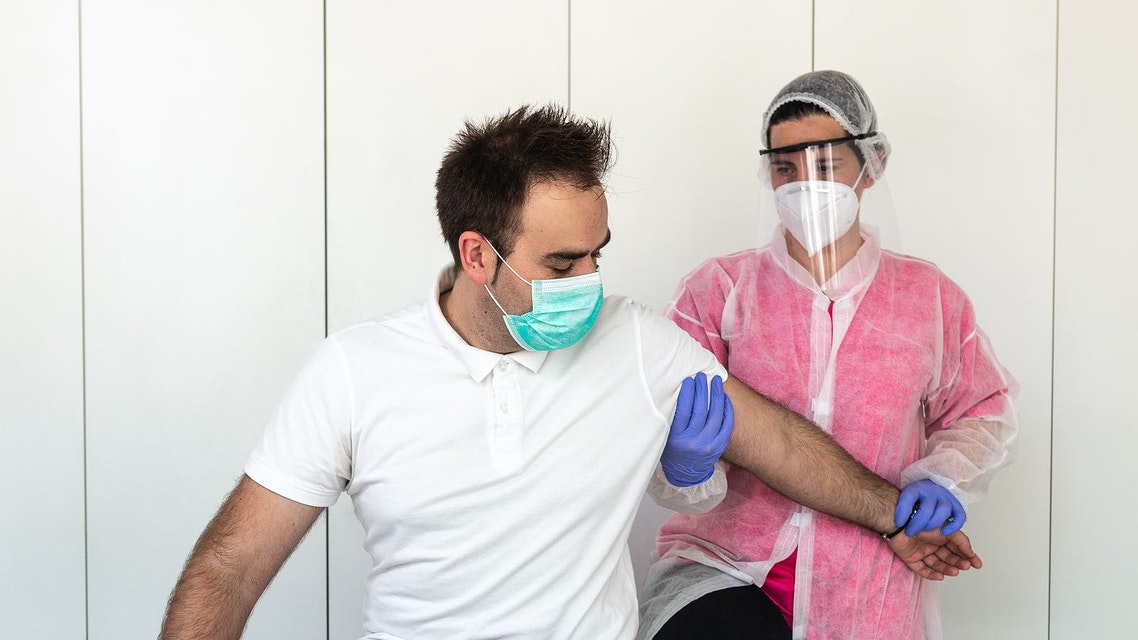Chest physical therapy involves indirect removal of mucus from breathing passage by physical therapists or respiratory therapists for improved breathing. It is also called respiratory or cardio-thoracic physiotherapy. Since the covid virus attacks the lungs and causes issues in breathing, it is necessary to give proper treatment to boost respiration. Chest physiotherapy improves gas exchange, reverse pathological progressions and shuns the need for artificial ventilation. For patients who are in the acute stage of COVID-19, there is not much evidence to prove that it is highly effective but for people who are recovering from this annoying virus, chest physiotherapy has proved to be very effective. The exercises for chest physical therapy are active cycles of breathing technique, cough exercise,diaphragmatic training and stretching exercise. They have proved to be effective and have improved diffusing lung capacity for carbon monoxide. Chest physiotherapy has also decreased anxiety and depression in patients.
1. In the acute stage
If the person is severely affected by the covid virus, chest physical therapy may not be recommended. Most of the patients have shown no exudation in the acute stage. Mechanical ventilation should be preferred. If the patient does experience exudation and shows moderate symptoms then chest physiotherapy can be used to counter dyspnoea, anxiety and depression. However, there are not any studies to prove it’s effectiveness apart from informal sources which cannot be blindly relied on. It can also vary from patient to patient. Hence, detailed assessment of your body by your physical therapist is a must.
2. During ventilation
There have been cases of some patients who have experienced loss of spontaneous breathing. It can eventually lead to lung collapse and ventilator associated pneumonia. At times like these, chest physical therapy has proved helpful. It can reduce your stay in the ICU and decrease your stay on mechanical ventilators. High frequency chest wall oscillation has produced great results. Patients have experienced dry sputum weight, reduced lung collapse and decreased culture positivity in two to three days. High frequency chest wall oscillation physical therapy includes a vest which is attached to a machine.The vibrations from the vest loosens the chest and thin the mucus. The machine vibrates at a high frequency thereby performing mechanical physical therapy. Your physical therapist will recommend you this technique when he deems it necessary. There have also been reports of patients who have received eleven sessions of physical therapy. The sessions included:-
- Upright body positioning
- Mobilization and exercise
- Active cycle of breathing techniques (ACBT)
After these sessions the patient experienced improved arterial oxygen level. Chest physical therapy is recommended because it reverses pathological progression,prevents atelectasis, enhances impaired gas exchange and reduces culture positivity. Since a person affected by covid shows symptoms related to the ones just mentioned,chest physical therapy is highly suggested. The chest physiotherapy recommended to patients on ventilator includes:-
- Positioning
- Active cycle of breathing techniques (ACBT)
- Ventilator hyperinflation
- Percussion
Any of these techniques must only be performed after carefully analyzing the respiratory, cardiological and neurological activities of the patient.
3. After Discharge
There are chances of respiratory failure in patients after they are discharged from the hospital. Chest vibration and percussion must be used to avoid such an occurrence. There have not been instances of needing chest physiotherapy immediately after discharge but being cautious is necessary. Patients who have taken chest physiotherapy sessions for 6 weeks have shown better lung health, less anxiety and depression,increased endurance and better quality of living. The sessions included the following exercises:-
- Respiratory muscle training
- Cough training
- Diaphragmatic training
- Stretching exercises
- Home exercises
4. Things to keep in mind while doing chest physical therapy
A chest physical therapy session can last between 20 to 40 minutes. Chest physiotherapy must be performed before meals or two hours after meal. It is important because the patient might throw up if the session is done immediately after a meal.Early morning and before going to bed is the most ideal time for chest physiotherapy. The length and frequency of this physical therapy session must be increased if the patient is getting more sick. Contact your physical therapist to know what frequency and length works best for you. Light clothing must be worn during these sessions and bulky jewellery should be removed around the neck, waist and chest both by the patient and the caregiver. Maintain a good supply of tissues or arrange a place for the patient to cough out the mucus. Sanitation and hygiene must be maintained. Masks should be worn to avoid the spread of this virus. It is also advised to equip with pillows, sofa cushions and bundles of newspaper. Clap and vibrate only over the ribs!
5. Conclusion
There is not much evidence to prove the usefulness of chest physical therapy in patients with acute covid symptoms. However, it has definitely benefited patients after discharge by improving the respiration and life quality.

